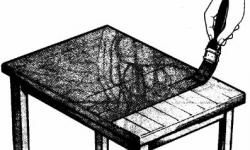Key Takeaways
- Removing lacquer and varnish stains requires a careful approach tailored to the type of material stained.
- To remove lacquer and varnish stains, you will generally scrape off any excess, apply a relevant solvent or cleaner and then thoroughly clean or rinse the area to remove the stain without damaging the surface.
- For delicate materials, like leather or suede, and hard surfaces, like wood or metal, specific recommendations include gentle scraping, the use of mild soap solutions or specialized cleaners to avoid further damage.
Lacquer and varnish are used to give surfaces a beautiful shine, but when it gets on the wrong surface, the result is anything but pretty. Read on for tips on how to remove stubborn lacquer and varnish stains.
The first step in removing lacquer and varnish stains is to identify the stained material.
Advertisement
Below are the most common types of materials that can become varnish-stained, with steps on how to remove lacquer and varnish stains from each:
- Non-washable fibers such as Acetate, Fiberglass, Rayon, Silk, Triacetate or Wool
- Washable fibers such as Acrylic Fabric, Burlap, Cotton, Linen, Modacrylic, Nylon, Olefin, Polyester, Rope or Spandex
- Hard surfaces such as Acrylic Plastic, Asphalt, Cork, Linoleum, Plexiglas, Polyurethane, Vinyl Clothing, Vinyl Tile or Vinyl Wallcovering
- Stone surfaces such as Alabaster or Marble
- Metal surfaces such as Aluminum, Iron, Stainless Steel or Tin
- Bamboo or Cane
- Masonry such as Bluestone, Brick, Concrete, Flagstone, Granite, Limestone, Masonry Tile, Sandstone, Slate or Terrazzo
- Carpet (synthetic or wool)
- Smooth surfaces such as Ceramic Glass/Tile, Enamel, Glass, Porcelain Fixtures
- Grout
- Leather or Suede
- Paint (flat or gloss)
Advertisement
